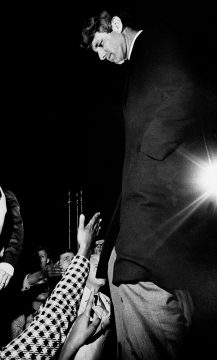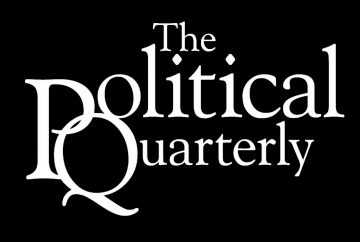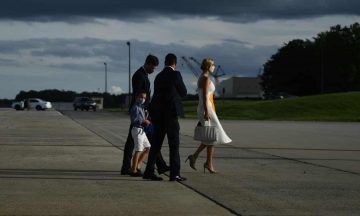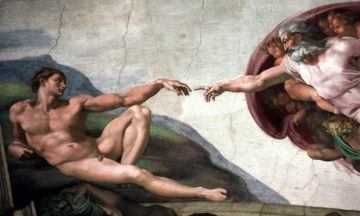Sam Levin in The Guardian:
 The call to “defund the police” has become a rallying cry at protests across America this week, and some lawmakers appear to be listening.
The call to “defund the police” has become a rallying cry at protests across America this week, and some lawmakers appear to be listening.
Activists who have long fought to cut law enforcement budgets say they are seeing an unprecedented wave of support for their ideas, with some elected officials for the first time proposing budget reductions and divestments from police. Here’s what we know about the movement, and how cities and states are responding.
What does it mean to ‘defund the police’?
For years, community groups have advocated for defunding law enforcement – taking money away from police and prisons – and reinvesting those funds in services. The basic principle is that government budgets and “public safety” spending should prioritize housing, employment, community health, education and other vital programs, instead of police officers. Advocates argue that defunding is the best way forward since attempts to reform police practices over the last five years have failed, as evidenced by the brutal killing of George Floyd. Groups have a range of demands, with some seeking modest reductions and others viewing full defunding as a step toward abolishing contemporary police services.
More here.

 For vonny leclerc
For vonny leclerc The largest number of COVID-19 supercomputing projects involves designing drugs. It’s likely to take several effective drugs to treat the disease. Supercomputers allow researchers to take a rational approach and aim to selectively
The largest number of COVID-19 supercomputing projects involves designing drugs. It’s likely to take several effective drugs to treat the disease. Supercomputers allow researchers to take a rational approach and aim to selectively  Today marks the anniversary of the death of Robert F. Kennedy, assassinated in 1968 after winning the primary in California, on the way to obtaining the nomination of the Democratic party and, perhaps, the presidency.
Today marks the anniversary of the death of Robert F. Kennedy, assassinated in 1968 after winning the primary in California, on the way to obtaining the nomination of the Democratic party and, perhaps, the presidency. I
I How does it feel to be black in America right now? First, I wonder, do I capitalize the “B”? Is that grammatically correct? More to the point, as an element of style, a choice, does it prove something to you or to me if I don’t? I confess I don’t know any more. These are the petty games that play on my mind as a black American. I cannot speak for all black people, of course. We are not a monolith; you seem to understand this by now. I can only speak for myself – as a black writer. That experience, at least, I know. Instead of worrying about the white man who might murder me in my own home, or on my morning run, what preys on me in the night is how I constructed the sentence as I replay the day, if it was adequately punctuated in its disavowal of racist oppression.
How does it feel to be black in America right now? First, I wonder, do I capitalize the “B”? Is that grammatically correct? More to the point, as an element of style, a choice, does it prove something to you or to me if I don’t? I confess I don’t know any more. These are the petty games that play on my mind as a black American. I cannot speak for all black people, of course. We are not a monolith; you seem to understand this by now. I can only speak for myself – as a black writer. That experience, at least, I know. Instead of worrying about the white man who might murder me in my own home, or on my morning run, what preys on me in the night is how I constructed the sentence as I replay the day, if it was adequately punctuated in its disavowal of racist oppression. Mona Ali in The Political Quarterly:
Mona Ali in The Political Quarterly: James Baldwin in The New Yorker:
James Baldwin in The New Yorker: Andrew Hui in Aeon:
Andrew Hui in Aeon: Quinn Slobodian in The Guardian:
Quinn Slobodian in The Guardian: Lara Putnam, Erica Chenoweth and Jeremy Pressman over at the Monkey Cage:
Lara Putnam, Erica Chenoweth and Jeremy Pressman over at the Monkey Cage: A
A Academic critics of Dryden or Pope were not in the habit, the last time I checked, of interspersing their monographs with reminiscences of sex clubs in Manhattan. An affectionate excursus on that subject in Mark Doty’s What is the Grass announces that this is no ordinary piece of literary criticism. ‘And your very flesh shall be a great poem,’ wrote Doty’s subject, Walt Whitman, who, one suspects, wouldn’t have minded a bit. Perhaps best known for his 1993 collection My Alexandria, prompted by the AIDS pandemic, Doty is one of the most compelling modern singers of ‘the body electric’ and in What is the Grass he has produced an elegant meditation on the great founding father of American poetry. Not only did Whitman’s example fire up the democratic modern lyrics of W C Williams and Allen Ginsberg; it also licensed poets to place themselves centre stage in their prose, from Adrienne Rich in What is Found There to Susan Howe in her prose-poetry hybrids. It is a licence that Doty seizes on greedily.
Academic critics of Dryden or Pope were not in the habit, the last time I checked, of interspersing their monographs with reminiscences of sex clubs in Manhattan. An affectionate excursus on that subject in Mark Doty’s What is the Grass announces that this is no ordinary piece of literary criticism. ‘And your very flesh shall be a great poem,’ wrote Doty’s subject, Walt Whitman, who, one suspects, wouldn’t have minded a bit. Perhaps best known for his 1993 collection My Alexandria, prompted by the AIDS pandemic, Doty is one of the most compelling modern singers of ‘the body electric’ and in What is the Grass he has produced an elegant meditation on the great founding father of American poetry. Not only did Whitman’s example fire up the democratic modern lyrics of W C Williams and Allen Ginsberg; it also licensed poets to place themselves centre stage in their prose, from Adrienne Rich in What is Found There to Susan Howe in her prose-poetry hybrids. It is a licence that Doty seizes on greedily. Before Italy became a nation, it was made up of a collection of city-states governed by un’autorità superior, in the form of a powerful noble family or a bishop. Siena was an exception in that it favoured civic rule. This partly accounts for the unique character of its art. It produced Ambrogio Lorenzetti’s The Allegory of Good and Bad Government, a series of frescos housed in the Palazzo Pubblico, the civic heart of the city. It is one of the earliest and most significant secular paintings we have. If civic rule were a church, this would be its altarpiece. Siena also imbued its artists with a rare and humanist curiosity that, even in their depictions of religious scenes, involved them in meditations on human psychology and ideas.
Before Italy became a nation, it was made up of a collection of city-states governed by un’autorità superior, in the form of a powerful noble family or a bishop. Siena was an exception in that it favoured civic rule. This partly accounts for the unique character of its art. It produced Ambrogio Lorenzetti’s The Allegory of Good and Bad Government, a series of frescos housed in the Palazzo Pubblico, the civic heart of the city. It is one of the earliest and most significant secular paintings we have. If civic rule were a church, this would be its altarpiece. Siena also imbued its artists with a rare and humanist curiosity that, even in their depictions of religious scenes, involved them in meditations on human psychology and ideas.